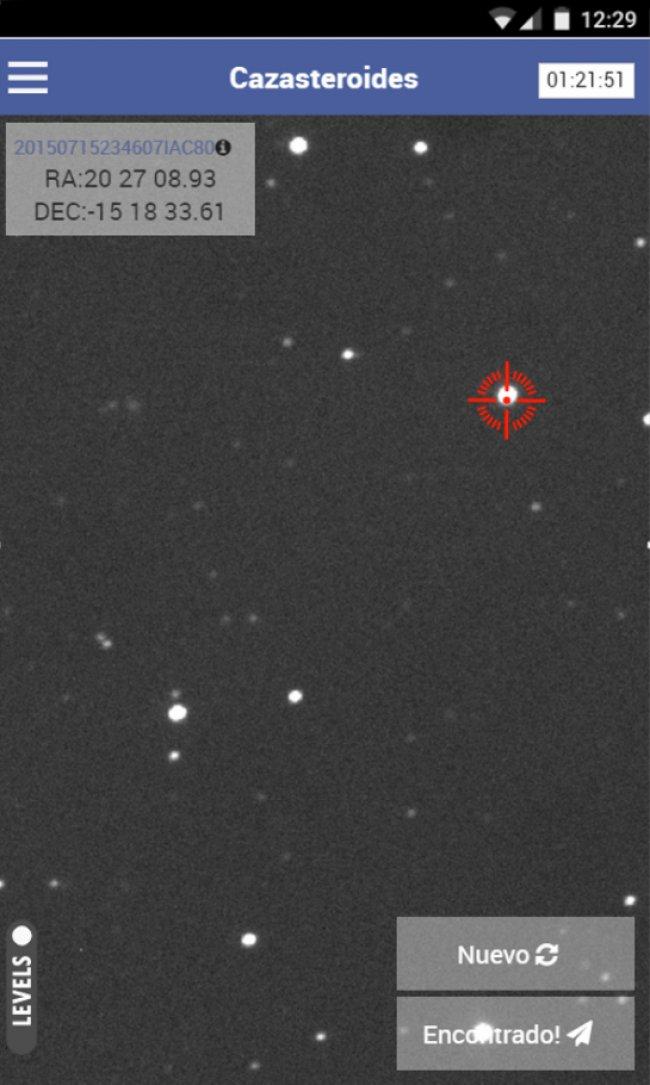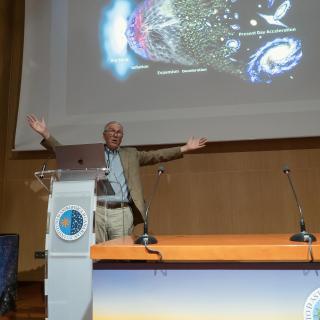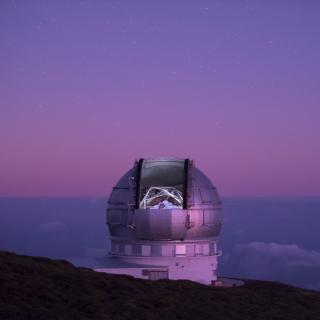At the present time we know of a population of 750,000 asteroids, and every month some 2,000 new asteroids are discovered. Around 2% of asteroids are classfied as NEA’s, (Near Earth Asteroids) and of these, about 10%, approximately 2,000, are PHA, asteroids potentially harmful to the Earth, which have a non-zero probability of making an impact on the planet. The Minor Planet Center, of the International Astronomical Union (IAU) is the organism which keeps a database on asteroides, based on observations by both profesional and amateur astronomers.
The Universidad Politécnica de Madrid (UPM) and the Instituto de Astrofísica de Canarias (IAC) have developed a app which is easy to use, and which allows anybody to help monitor the population of asteroids. This is a free application for mobile phones, called “cazasteroides” (asteroid hunter). “To be a cazasteroides,” explains Miquel Serra-Ricart, an astronomer at the IAC and the scientist responsible for the app, “is easy, you need only install the app (in its versión for adroid, iOS or on a web navigator) and have sharp eyesight. On the cellphone it shows a series of images of the sky, and you need to mark those objecst suspected of being asteroids, as they move against the background of the fixed stars. The detections are first checked by the users, with a voting system, and finally a team of professionals will verify the real nature of the detected obejcts”.
The application includes techiques for grading, to make it more attractive, with prizes in the form of points, and virtual money, for “shares” which can be spent for operations from the app within a set of astronomical experiments on the GLORIA network. (http://gloria-project.eu).
The medium term aim is to build a worldwide network of telescopes which contribute their images and form a part of this application, so that thanks to citizen collaboration the population of asteroids which pose a danger to the Earth can be monitored with great rapidity.
The prototype was presented last November in the Week of Science and Innovation in the Canaries. Miquel Serra-Ricart explained the project to dozens of school students who tried the app with their own mobile phones. “The sharp eyesight of younger people will allow us to detect asteroids which are fainter, and therefore smaller, than could be detected with traditional image recognition algorithms. The key is to manage to get a very wide citizen implication in the project. It is important for everyone to protect the future of the planet, and “cazasteroides” will be a part of our shield against objects which get too close to the Earth”, commented this researcher.
Between December 22nd 2016 and January 8th 2017, a more advanced version will be presented at the Parque Infantil de Tenerife (PIT). Thanks to the collaboration of Media Markt Tenerife, and Volkswagen Canarias thousands of young people will be able to become “asteroid hunters” using Android tablets and their own cellphones.
This project has been funded by the Spanish Foundation for Science and Technology under project FCT-15-10462 during the year 2016.
Follow the project on these channels:
Twitter: https://twitter.com/cazasteroides
Facebook: https://www.facebook.com/cazasteroides/



